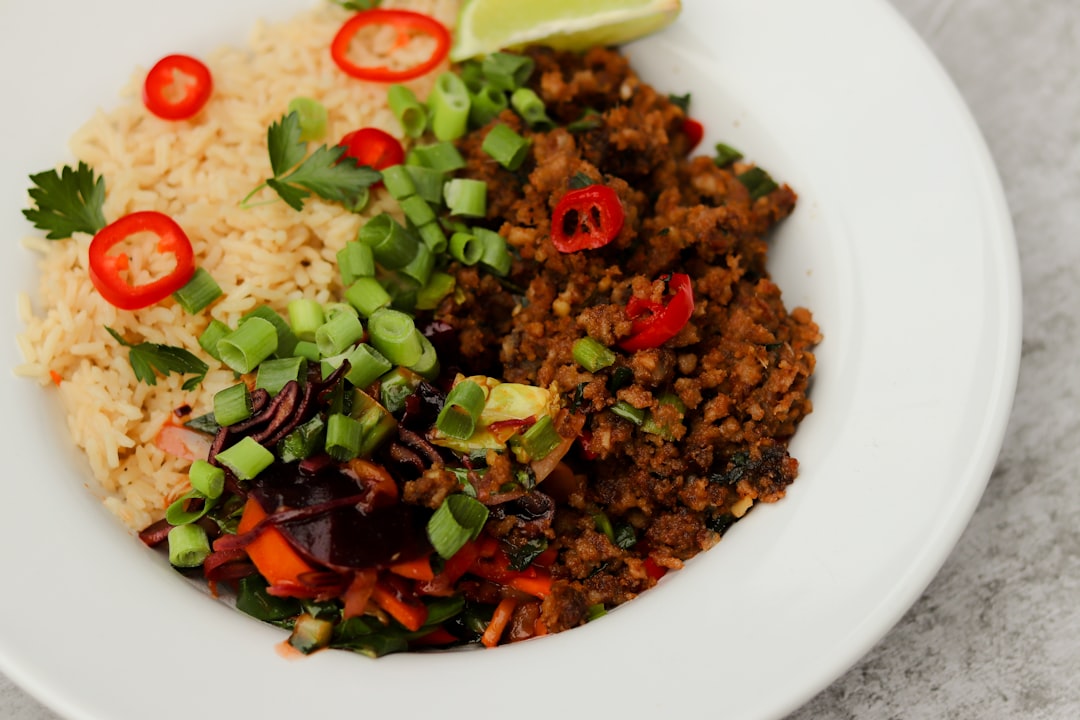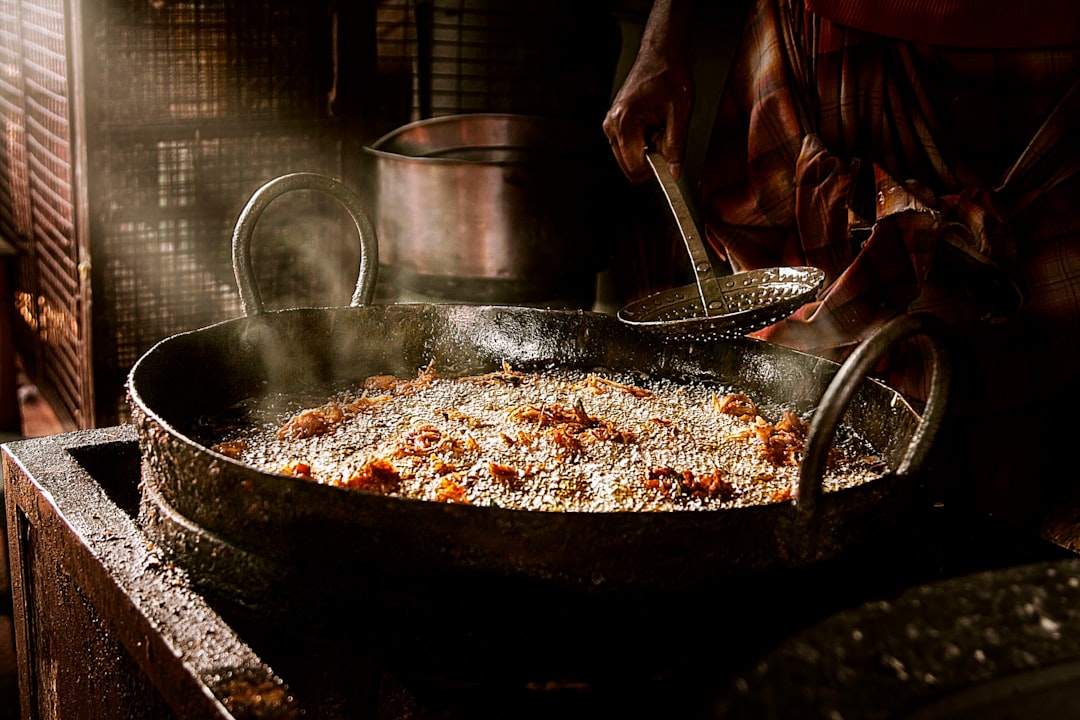The origins of chili can be traced back to the indigenous peoples of the Americas, particularly in regions that are now part of Mexico and the southwestern United States. Archaeological evidence suggests that chili peppers were cultivated as early as 6,000 years ago. The Aztecs and Mayans revered these fiery fruits, incorporating them into their diets not only for flavor but also for their medicinal properties.
The introduction of chili to European cuisine occurred after the Spanish conquest of the Americas in the 16th century, when explorers brought back various types of peppers. This marked the beginning of a culinary tradition that would evolve and adapt across continents. As chili spread throughout the world, it underwent numerous transformations, influenced by local ingredients and cooking methods.
In the United States, particularly in Texas, chili con carne emerged as a distinct dish in the 19th century, characterized by its use of beef and a variety of spices. This version of chili became emblematic of Texan culture and was often served at community gatherings and competitions. Over time, chili has transcended its humble beginnings to become a beloved dish in many cultures, celebrated for its warmth and heartiness, as well as its ability to bring people together around a shared meal.
Key Takeaways
- Chili has a rich history as a culinary tradition, with roots in Native American and Spanish cuisines.
- The perfect spicy chili requires key ingredients like ground beef, beans, tomatoes, and a variety of spices for flavor.
- Achieving the perfect balance of heat and flavor in spicy chili involves careful measurement and experimentation with different spices.
- Cooking the best spicy chili involves techniques like browning the meat, layering flavors, and allowing the chili to simmer for maximum taste.
- Spicy chili variations cater to different dietary preferences, from vegetarian options to meat-lovers’ versions.
Ingredients for the Perfect Spicy Chili
Creating the perfect spicy chili begins with selecting high-quality ingredients that will contribute to both flavor and texture. The foundation of any great chili is the meat, which can vary widely depending on personal preference. Ground beef is a classic choice, but many opt for alternatives such as pork, turkey, or even chicken for a lighter version.
For those who prefer a vegetarian option, beans—such as kidney beans, black beans, or pinto beans—serve as an excellent protein source while adding a creamy texture. In addition to meat or beans, the choice of spices is crucial in crafting a well-rounded chili. Common spices include cumin, paprika, and oregano, which provide depth and warmth.
However, the star of the show is undoubtedly the chili pepper itself. Varieties such as jalapeño, serrano, or habanero can be used to achieve varying levels of heat. Fresh peppers can be diced and sautéed alongside onions and garlic to create a flavorful base, while dried chili powders can be added later in the cooking process for a more concentrated flavor.
The combination of these ingredients sets the stage for a chili that is not only spicy but also rich in flavor.
The Secret to Achieving the Perfect Balance of Heat and Flavor

Achieving the perfect balance between heat and flavor in chili is an art form that requires careful consideration of ingredient proportions and cooking techniques. One common mistake is to focus solely on increasing the heat level without paying attention to the overall flavor profile. While some may enjoy an intensely spicy dish, it is essential to remember that heat should enhance rather than overpower other flavors.
To achieve this balance, it is advisable to start with milder peppers and gradually introduce hotter varieties until the desired level of spiciness is reached. Another key factor in balancing heat and flavor is the use of acidity. Ingredients such as tomatoes, lime juice, or vinegar can help cut through the richness of the meat and beans while providing a refreshing contrast to the heat.
Additionally, incorporating sweet elements—such as bell peppers or even a touch of sugar—can help mellow out the spiciness and create a more harmonious dish. The interplay between these elements allows for a complex flavor profile that keeps diners coming back for more.
Tips for Cooking the Best Spicy Chili
| Tip | Description |
|---|---|
| Use the right chili peppers | Choose a mix of chili peppers like jalapeños, serranos, and habaneros for depth of flavor and heat. |
| Toast the spices | Toast ground spices like cumin and chili powder in a dry skillet to enhance their flavor. |
| Add depth with aromatics | Sauté onions, garlic, and bell peppers to add depth and complexity to the chili. |
| Simmer for a long time | Let the chili simmer for at least an hour to allow the flavors to meld together. |
| Balance the heat | Add a touch of sweetness with a bit of sugar or honey to balance out the spiciness. |
When it comes to cooking chili, there are several tips and techniques that can elevate your dish from ordinary to extraordinary. One fundamental approach is to take your time with the cooking process. Allowing the ingredients to simmer slowly enables flavors to meld together beautifully.
A long cooking time also helps tenderize tougher cuts of meat, resulting in a more satisfying texture. Many chefs recommend cooking chili for at least an hour, but some even suggest letting it simmer for several hours or overnight for maximum flavor development. Another important tip is to layer flavors throughout the cooking process.
Start by sautéing aromatics like onions and garlic until they are fragrant and translucent before adding meat or beans. This initial step builds a flavorful base that will permeate the entire dish. Additionally, consider adding spices at different stages; some spices benefit from being toasted briefly in oil before being added to the pot, while others may be better suited for later incorporation to preserve their potency.
This thoughtful layering creates a depth of flavor that distinguishes a great chili from a mediocre one.
Variations of Spicy Chili: From Vegetarian to Meat-Lovers
Chili is an incredibly versatile dish that can be adapted to suit various dietary preferences and tastes. For meat lovers, traditional chili con carne remains a favorite, often featuring chunks of beef or pork simmered with an array of spices and beans. However, there are countless variations that cater to different palates.
For instance, white chicken chili has gained popularity in recent years, utilizing shredded chicken breast combined with white beans and green chilies for a lighter yet equally satisfying option. On the other end of the spectrum lies vegetarian chili, which can be just as hearty and flavorful as its meat-based counterparts. By incorporating a variety of beans—such as black beans, chickpeas, or lentils—along with an assortment of vegetables like zucchini, corn, and bell peppers, one can create a robust dish that satisfies even the most ardent carnivores.
Additionally, using smoked paprika or chipotle peppers can impart a smoky depth that enhances the overall flavor without relying on meat.
The Health Benefits of Spicy Chili

Beyond its delicious taste, spicy chili offers several health benefits that make it an appealing choice for many diners. One of the primary components contributing to these benefits is capsaicin, the compound responsible for the heat in chili peppers. Capsaicin has been shown to have anti-inflammatory properties and may aid in pain relief by blocking pain receptors in the body.
Furthermore, studies suggest that capsaicin can boost metabolism by increasing thermogenesis—the process by which the body generates heat—potentially aiding in weight management. Chili is also packed with nutrients from its various ingredients. Beans are an excellent source of plant-based protein and fiber, promoting digestive health and helping to regulate blood sugar levels.
Tomatoes provide essential vitamins such as vitamin C and potassium while also being rich in antioxidants like lycopene, which has been linked to reduced risk of certain chronic diseases. By incorporating a variety of colorful vegetables into your chili recipe, you can create a nutrient-dense meal that supports overall health.
Pairing Spicy Chili with the Perfect Side Dishes
When it comes to serving spicy chili, choosing complementary side dishes can enhance the overall dining experience. One classic pairing is cornbread—a slightly sweet bread that contrasts beautifully with the heat of chili. The crumbly texture and buttery flavor provide a satisfying accompaniment that balances out the spiciness while also serving as a vehicle for scooping up every last bite.
Another popular option is rice, which can help absorb some of the heat while adding substance to the meal. Whether served plain or flavored with herbs and spices, rice provides a neutral base that allows the flavors of the chili to shine through without overwhelming the palate. For those looking for something lighter, a simple green salad dressed with citrus vinaigrette can offer a refreshing contrast to the richness of chili while adding an extra layer of texture.
Serving and Presentation: Making Your Spicy Chili Stand Out
Presentation plays a significant role in elevating any dish, including spicy chili. To make your chili visually appealing, consider serving it in colorful bowls or rustic earthenware dishes that highlight its vibrant hues. Toppings such as chopped cilantro, diced avocado, shredded cheese, or sour cream not only add visual interest but also provide additional layers of flavor and texture.
Garnishing with fresh herbs or a sprinkle of lime juice just before serving can enhance both presentation and taste. Additionally, consider offering a variety of toppings on the side so guests can customize their bowls according to their preferences. This interactive element not only makes for an engaging dining experience but also allows individuals to control their spice levels while enjoying your delicious creation.
Spicy Chili: A Versatile Dish for Any Occasion
Spicy chili’s versatility makes it suitable for various occasions—from casual weeknight dinners to festive gatherings and potlucks. Its ability to be made in large batches means it can easily feed a crowd without requiring extensive preparation time on the day of an event. Moreover, chili can be made ahead of time and stored in the refrigerator or freezer, allowing flavors to deepen over time while providing convenience for busy schedules.
For gatherings such as game day parties or family reunions, setting up a chili bar with different toppings and sides encourages guests to personalize their bowls while fostering camaraderie among diners. This interactive approach not only showcases your culinary skills but also creates an inviting atmosphere where everyone feels included in the meal preparation process.
The Cultural Significance of Spicy Chili in Different Regions
Chili holds cultural significance across various regions worldwide, each with its unique interpretation and preparation methods reflecting local traditions and ingredients. In Mexico, for example, chili is integral to many traditional dishes beyond just chili con carne; it features prominently in salsas, mole sauces, and enchiladas. The use of different types of chilies—such as ancho or guajillo—adds complexity to these dishes while showcasing regional variations based on climate and agricultural practices.
In contrast, Indian cuisine incorporates chilies into curries and spice blends like garam masala, where they contribute both heat and depth of flavor. The use of fresh green chilies alongside dried varieties allows for diverse expressions within Indian cooking traditions. Similarly, Thai cuisine utilizes chilies in dishes like green curry or tom yum soup, where they are balanced with sweet coconut milk or tangy lime juice to create harmonious flavors that reflect Thailand’s culinary philosophy.
Spicy Chili: A Timeless Comfort Food for All Seasons
Spicy chili transcends seasonal boundaries; it serves as comfort food year-round regardless of weather conditions or occasions. In colder months, its warmth provides solace against chilly temperatures while offering hearty sustenance during winter gatherings or holiday celebrations. Conversely, during warmer months when served fresh with toppings like avocado or lime juice alongside refreshing beverages like iced tea or beer—it becomes an ideal dish for summer barbecues or outdoor picnics.
The adaptability of spicy chili allows it to evolve with changing tastes while remaining rooted in tradition—a testament to its enduring appeal across generations. Whether enjoyed at home with family or shared among friends at social gatherings—spicy chili continues to be cherished not only for its bold flavors but also for its ability to bring people together around shared experiences centered around food.



